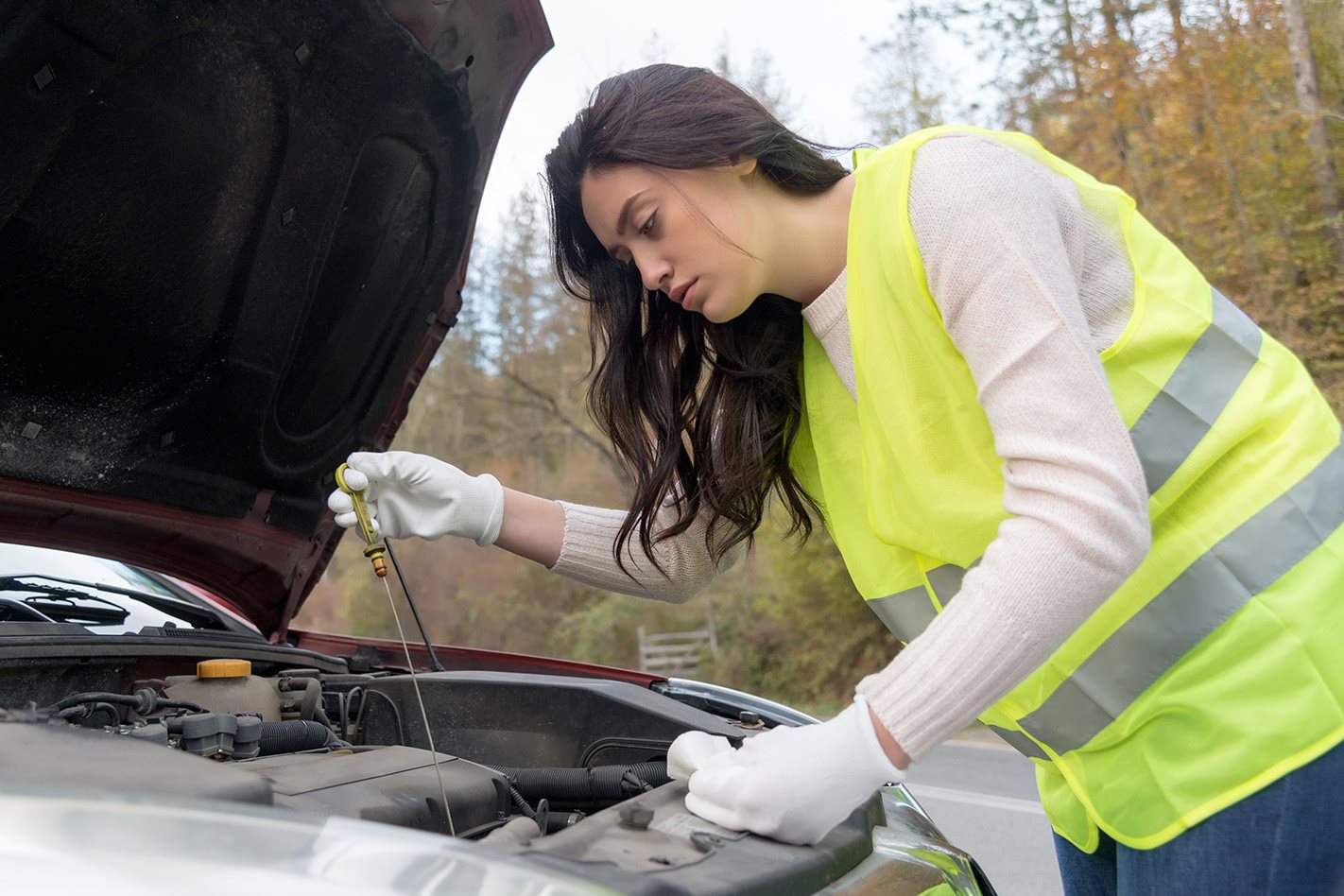
You’ve bought a new car and you’re excited to show off. But with your new purchase comes certain responsibilities.
Many people are tempted to simply hand off that responsibility to a mechanic, whether it’s an independent operator or the service department of the dealership they brought their car from. However, scheduled servicing isn’t the only thing you need to take care of when it comes to maintaining your car – if anything, it’s simply the bare minimum.
That said, we recognise some people just aren’t that mechanically inclined – if that’s you, then perhaps you are indeed better off outsourcing the entirety of your car’s upkeep to a third party.
However, the vast majority of you should have the mechanical aptitude to follow a few simple rules about taking care of your car – if you do, you could wind up saving significant amounts of money by being able to take care of trivial maintenance tasks yourself instead of booking your car in with a mechanic whenever something minor goes wrong.
While the major services, safety checks and nuts-and-bolts repairs are best left to the professionals, there are still some simple things you can do to keep your vehicle in good condition. And by simple, we mean easy-peasy
1. THE BIBLE
When in doubt, read the instructions. Wondering whether that weird light on the dash is something important? Don’t ignore it, open up your car’s owners manual and find out what it is. Make sure you always have your owner’s manual on you – when it comes to your car, it’s your first port of call.
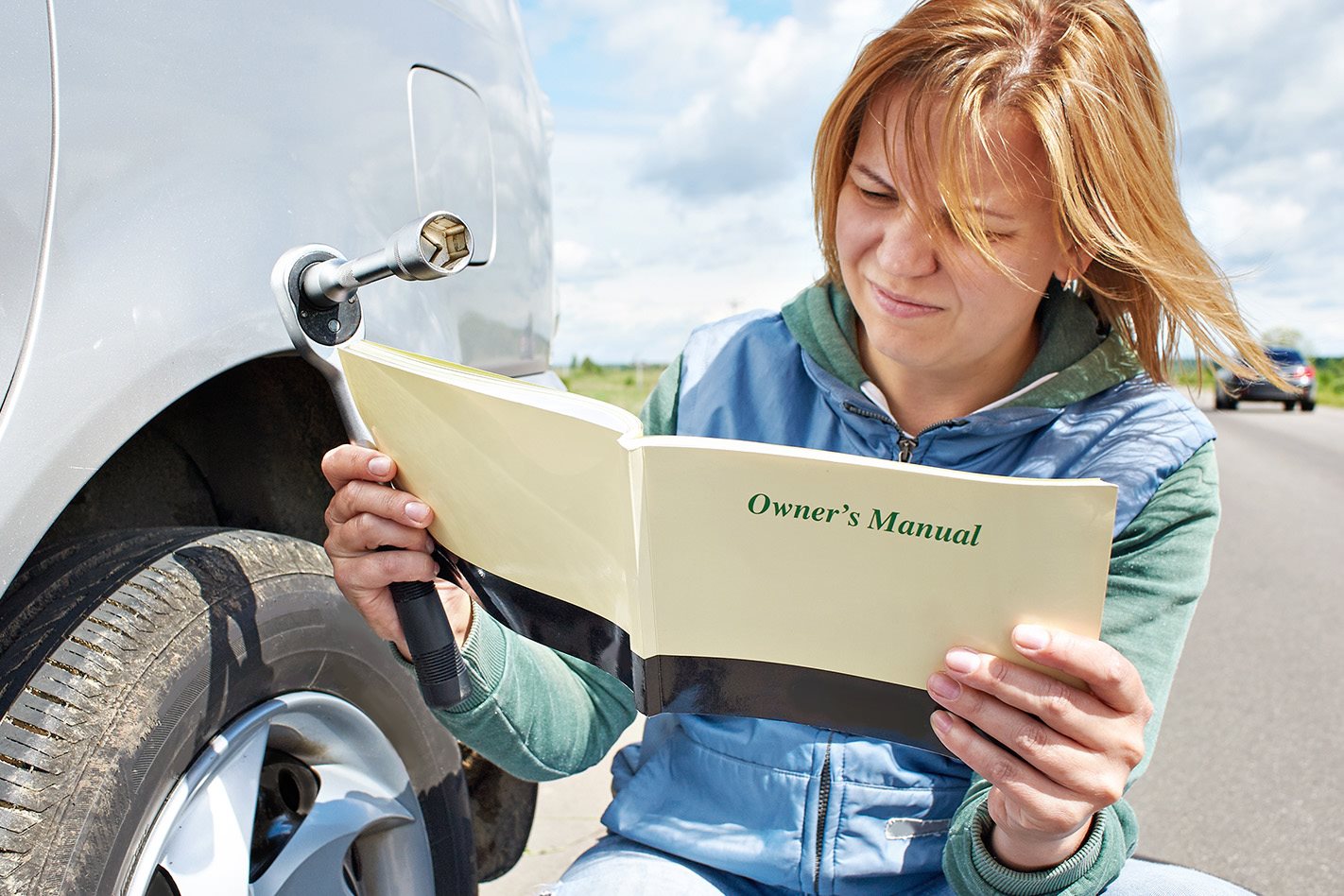
It will tell you all kinds of things like what type of globe you’ll need to buy if a headlight goes out, as well as how to install that globe. Is something stuck or not operating as it should? The manual will probably help you figure out what’s gone wrong, and perhaps present you with an easy fix.
If your car is missing its manual you can always ask your local dealer if it can be acquired or better yet, download it for free in PDF form from reputable websites. If you do the latter, ideally get one for an Australian-market car as there are often small differences in functionality and equipment from region-to-region.
2. PROPER FOOTWEAR
One of the most important car components is often the most neglected – don’t skimp on tyres. Using worn or cheap tyres is like running in clogs; noisy, strenuous, and you may end up breaking something. It’s a topic we frequently harp on about because it’s so critical to vehicle safety, but there’s a simple rule: buy the most expensive tyres you can afford.
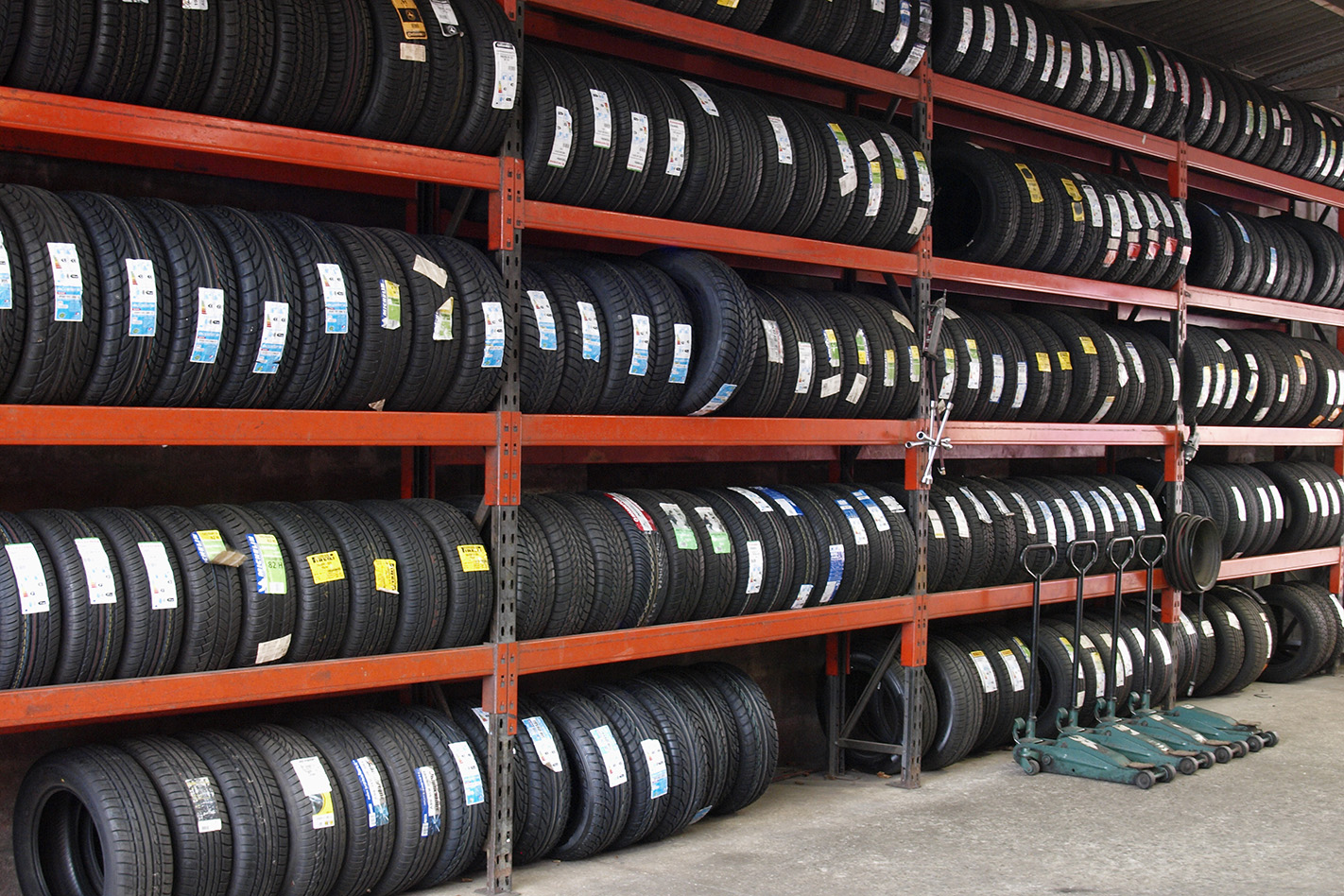
Good tyres may be pricey, but they are the only thing connecting your car to the road. The surface of the tyre that grips the tarmac, known as the ‘contact patch’, is only about as big as your hand, so you want the best quality rubber you can get – buy well and look after them.
As air escapes over time, be sure to set a recurring alarm on your phone to check your tyres every couple of months at a minimum. Under or over-inflated tyres can reduce your contact patch by up to 30 per cent, and riding around on poorly-inflated bags of air will affect your fuel economy and reduce the life of the tyre.
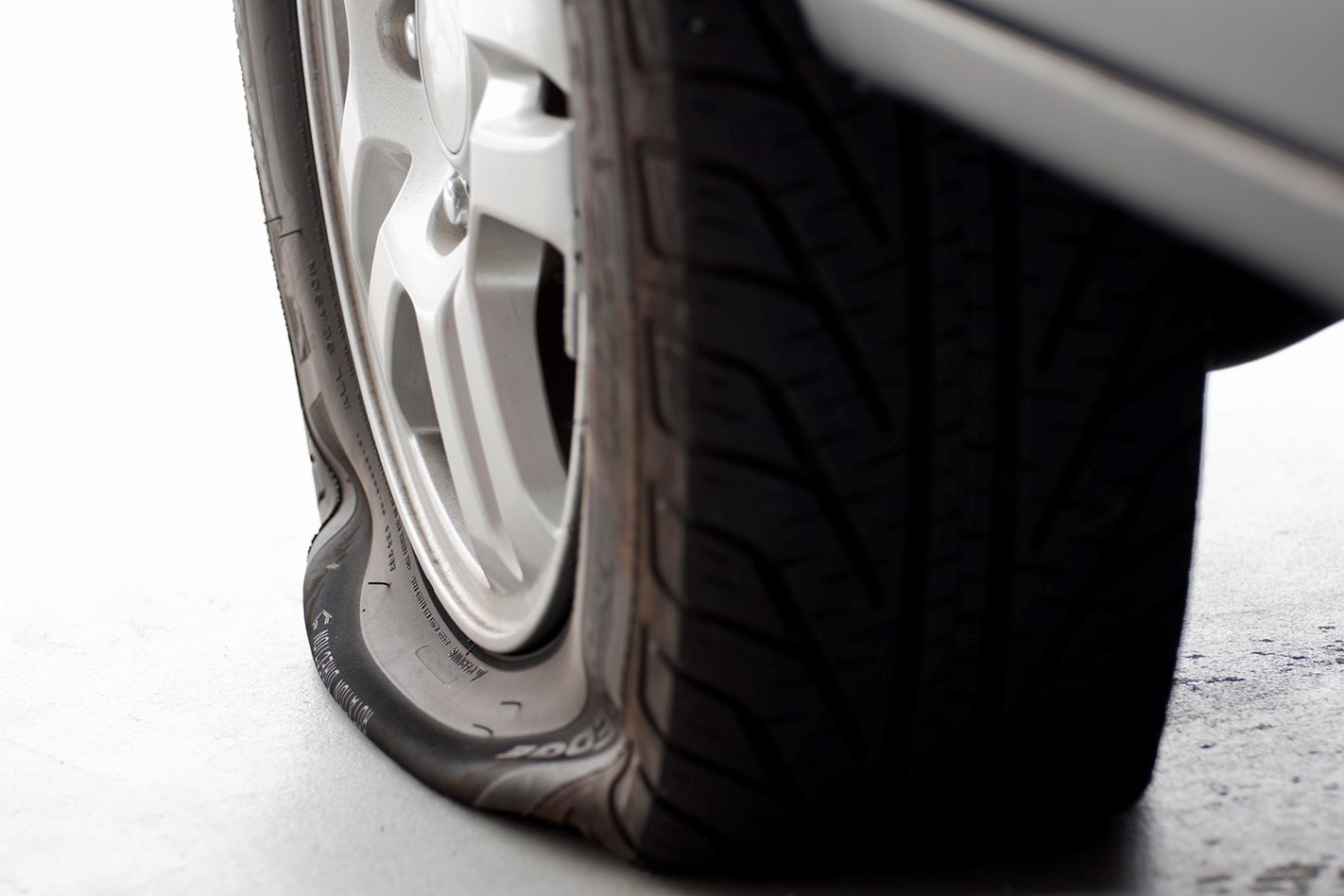
If your tyre looks like the one above, stop driving right away. Don’t EVER drive any more than a few metres if your tyres are so flat that the rim of the wheel is pinching the sidewall against the ground. You’ll do irreparable damage to the tyre that can turn them from being potentially repairable into dangerous junk.
Did you know that pressures should be checked when the tyres are cold? That means that drive to the servo isn’t necessarily the best option, as your tyres will naturally heat up a few degrees on the way over. Buy yourself a decent tyre gauge to keep in the glove box for consistent readings at home. Your car’s optimum tyre pressures can be found on a placard on your car, typically in the door jamb, the inside the fuel cap, or under the bonnet.
If your pressures don’t match up, then you can head to the service station. Try to find one with a digital filling station for accuracy. And don’t forget to also check the air in your spare – the last thing you want is to cop a puncture, then discover your only means of getting home has no air in it either.
3. STRAIGHT AND NARROW
A minimum of 1.5mm of tread all the way across the tyre is required to be road legal (and safe). It’s hard to check this across the whole surface of your tyre though, particularly the inside shoulder.
Here’s a handy trick to check the tread you can’t see: take a coin and sink it into the tread on the outside shoulder of the tyre. Mark the depth of the tread on the coin with your thumbnail. Now, without moving your thumbnail, reach in to the inside shoulder of the tyre and sink the coin into a corresponding tread groove.

If the measurements are not even you may need to ask about a wheel alignment at your next service. And if there’s no tread to sink the coin into, or it’s not even remotely close to that 1.5mm minimum, get yourself to your nearest tyre centre ASAP. Driving in the wet on tyres with next to no tread is extraordinarily dangerous.
4. FLUID MOTION
Like humans, cars need fluids to keep them running. Typically, your main fluids – engine oil, brake fluid and coolant – will all be checked at your scheduled service. However, if you’re a bit naughty and stretch your intervals, you’re planning on going on a long trip, or you’ve got the bonnet popped to add washer fluid to your car at the servo, make a visual check.
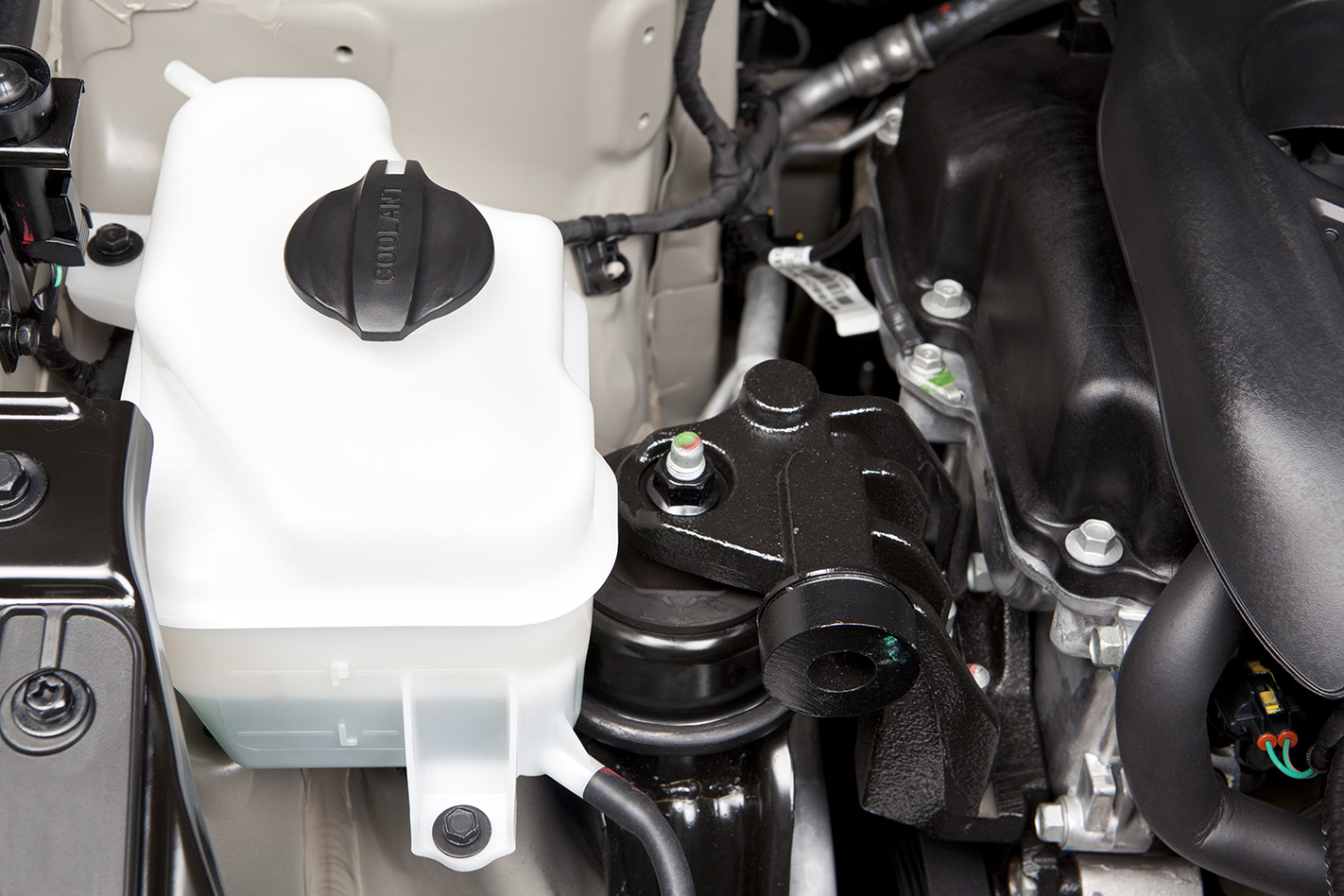
No, you don’t need mechanical knowledge. Brake fluid, windscreen washer and radiator reservoirs are usually the only clear-ish plastic containers under the bonnet, and they normally have a line on the bottle itself indicating the optimal fluid level. The one above is for coolant.
Be careful with the coolant system though – never open up the radiator cap or the cap to a pressurised coolant overflow bottle or header tank when the engine is hot, as you could spray scorching-hot coolant all over you. Wait until the engine cools down, and only use either distilled water or, better yet, premixed coolant of the type specified by the manufacturer (it’s usually bright green or red). Not all coolant bottles are clear either – the one below is opaque plastic.
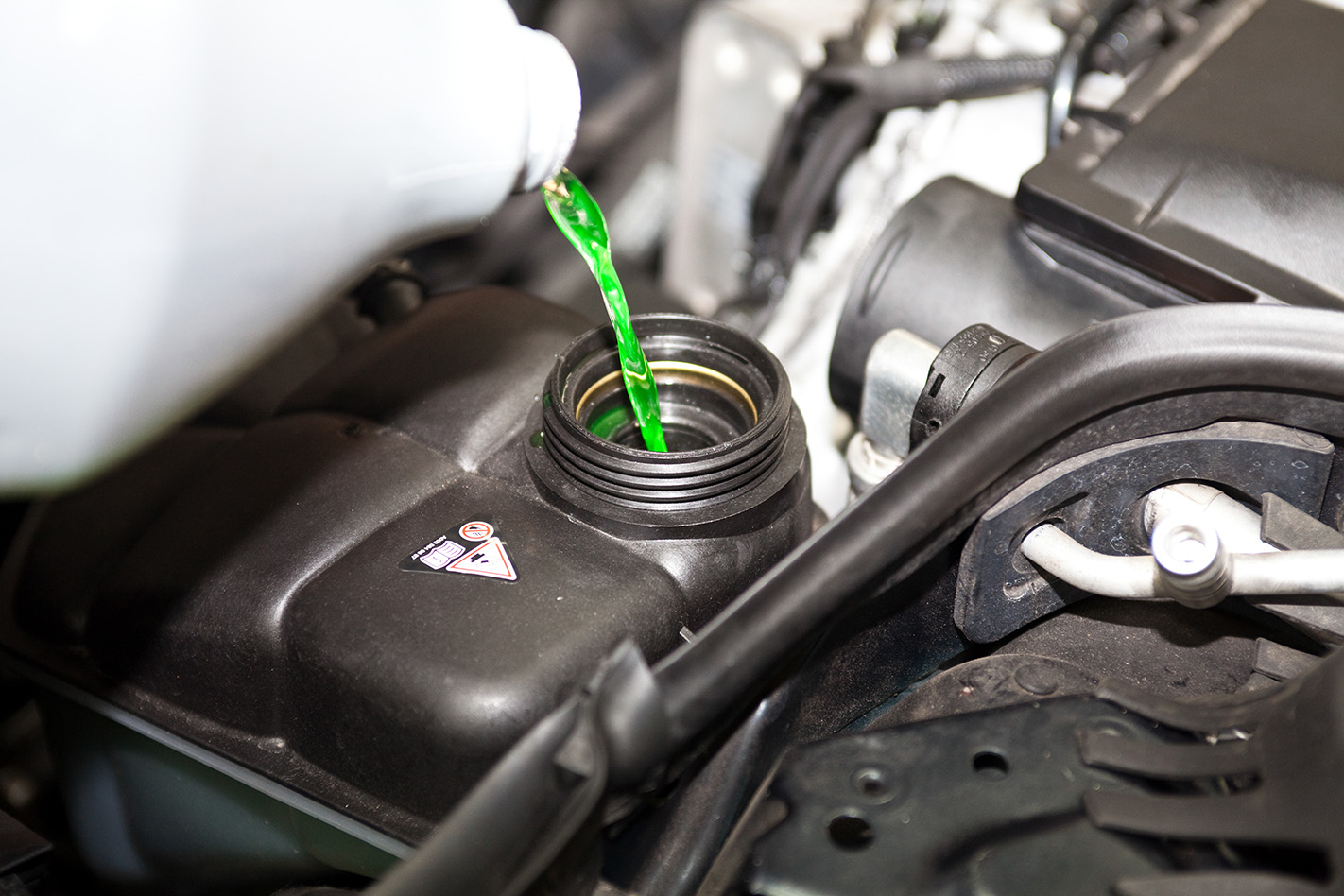
The brake fluid reservoir is normally located up high on the firewall on the driver’s side (like in the photo below), and requires hydraulic fluid of a certain type. The specific fluid required will be shown either somewhere on the reservoir or inside your owner’s manual, and mixing fluid types can either damage the brake system or reduce its effectiveness. Tread carefully with this one.
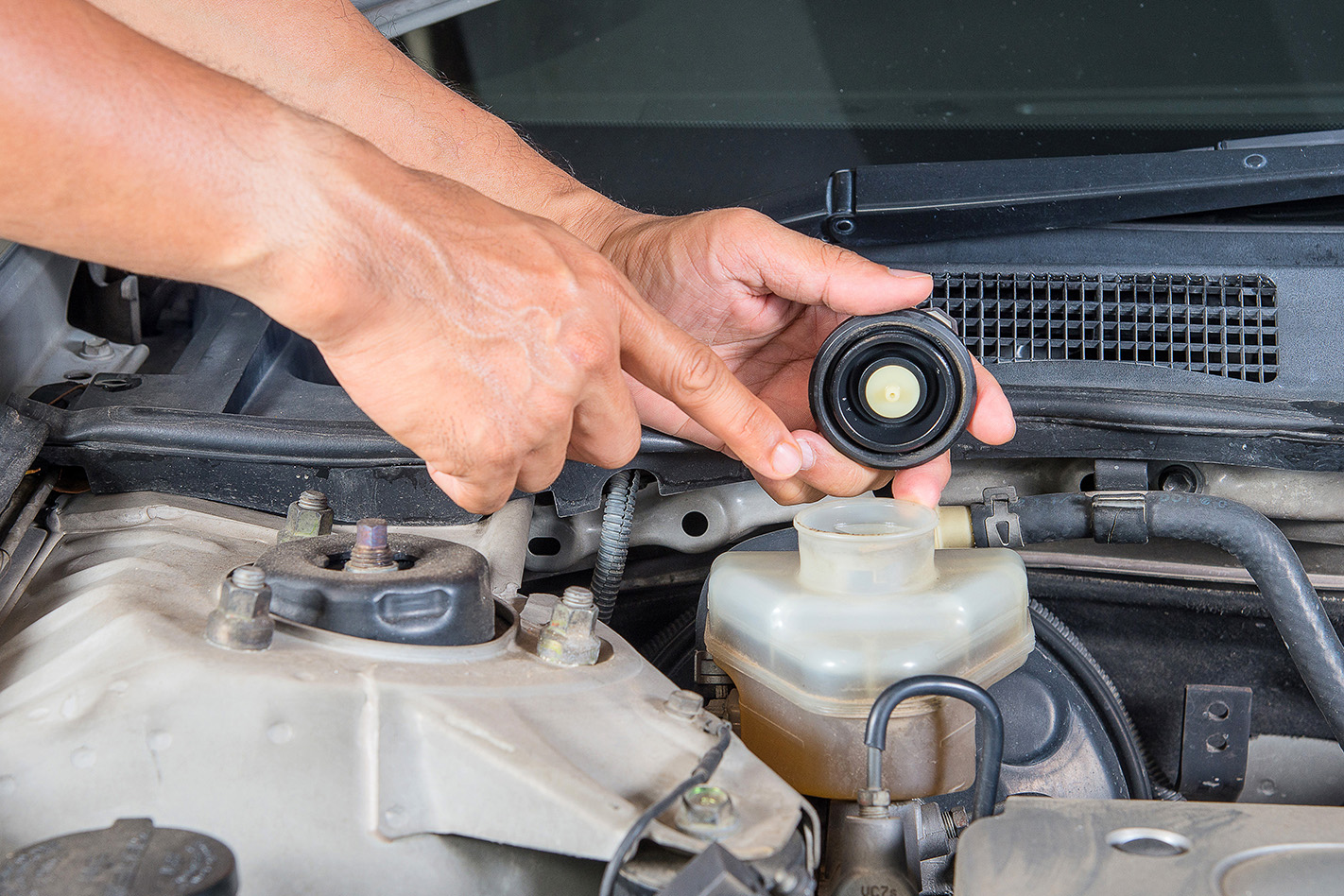
Engine oil is a bit trickier, as you can’t see into the engine to check how much is in there. Locate the dipstick (first-timers should consult the manual), which is a long metal rod with a coloured ring at the end that reaches all the way into the bottom of your engine block.
Grab some paper towels or a rag and pull the dipstick out slowly (be careful not to flick it onto your clothes), then wipe its length clean with the cloth. Feed it back into the holder, pushing it all the way in. Now pull it back out again, hold onto it with the cloth at the halfway point and check the end of the dipstick. There are grooves to clearly label low, optimal and high levels of oil. Simple!
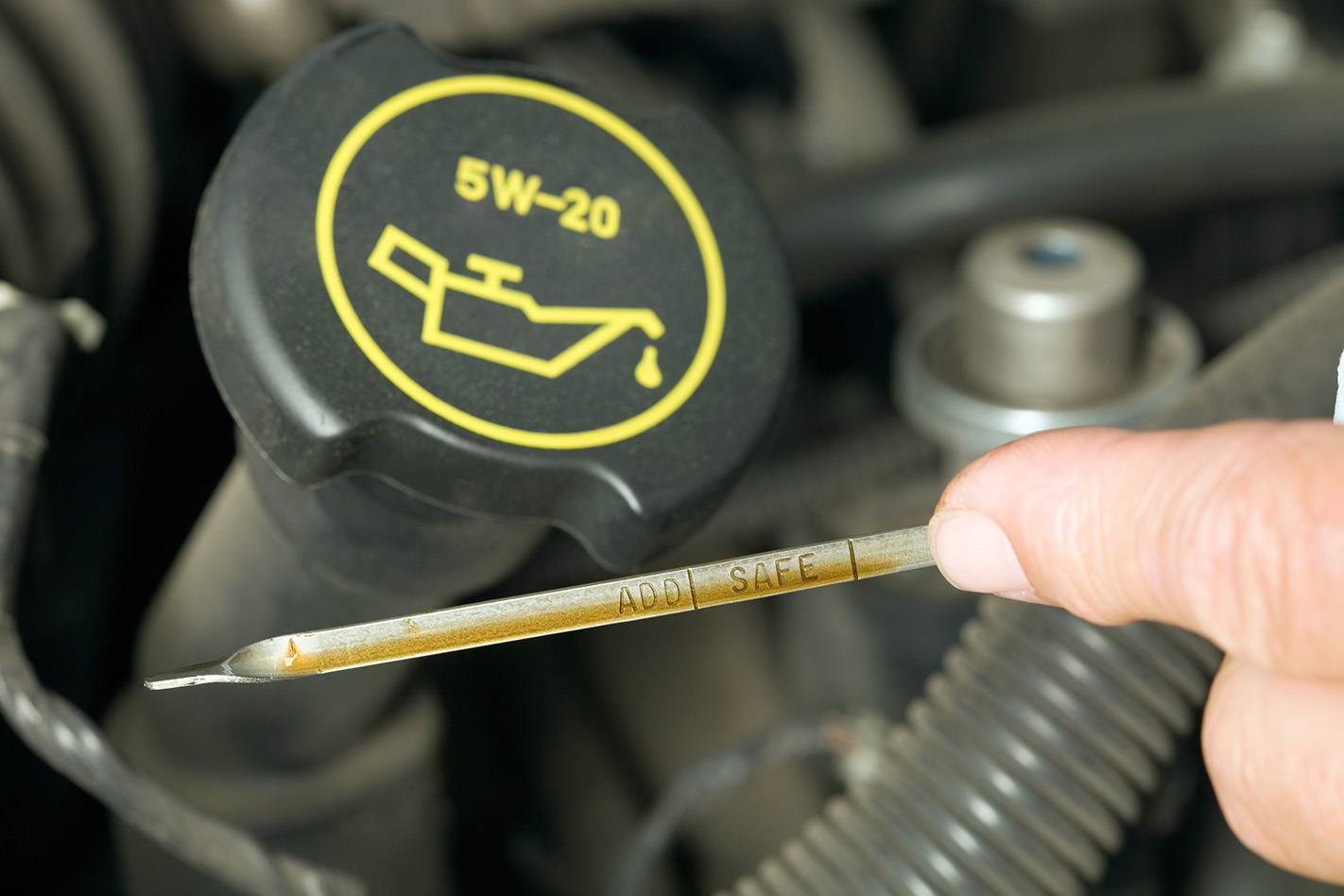
If you need more oil, check your owner’s manual for the specific viscosity of oil your car requires or, if you don’t know what any of that means, simply ask the guys at your local mechanic or car-parts store.
Handy hint: The oil should be translucent – if not transparent – when you’ve wiped the dipstick. If it’s solid black, gluggy oil, top it up if needed then get it to your mechanic or service centre pronto to have an oil change performed.
Does the oil look red rather than yellow or dark brown? You may have pulled the dipstick for your automatic transmission instead, which will also be located somewhere within the engine bay. Once again, double-check your manual to make sure you’ve pulled the right stick.
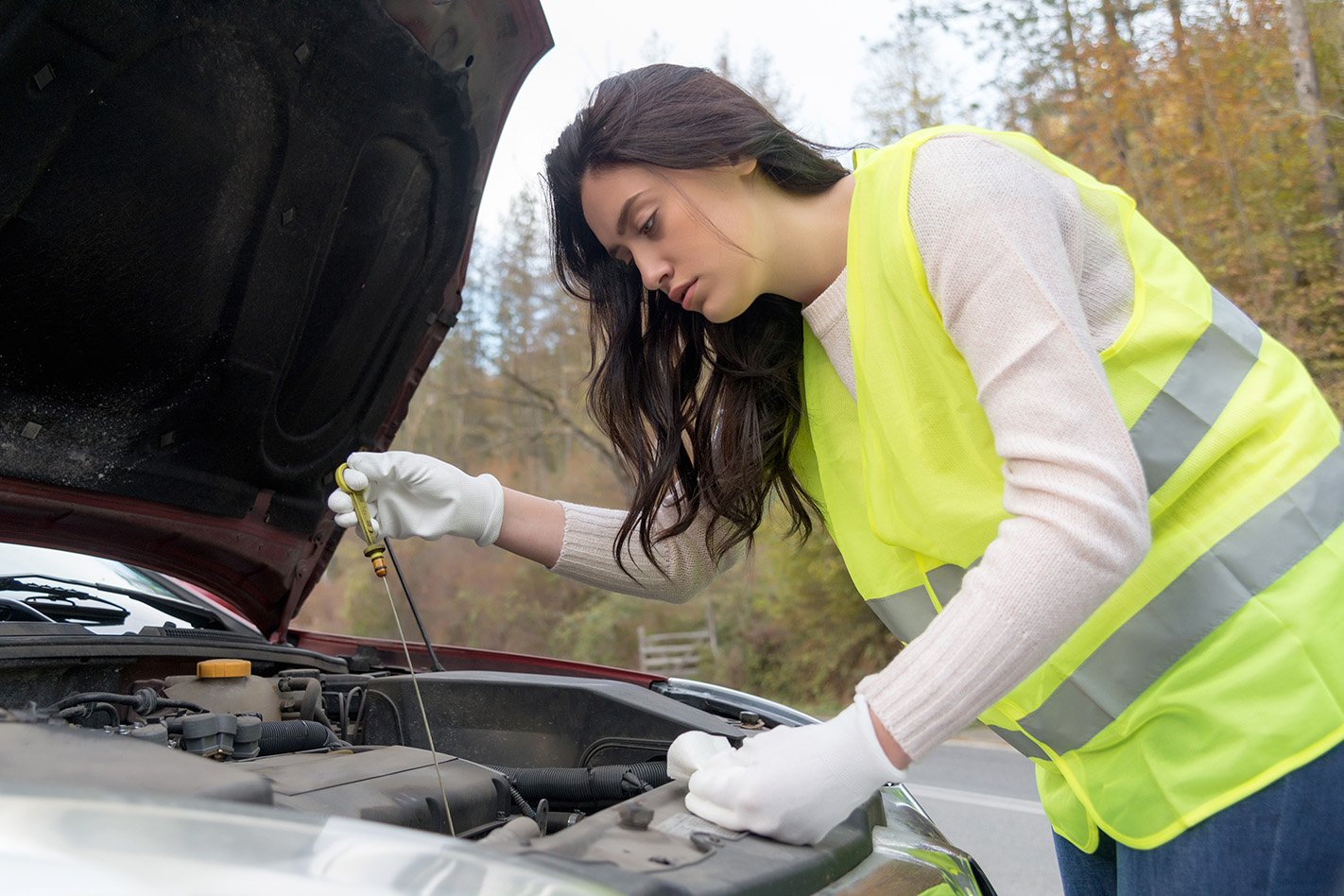
5. FULLY CHARGED
If your car is as slow to start as you are in the mornings, it could be your battery – but don’t rush to replace it just yet. Lead-acid car batteries are electrochemical; they produce electricity through a chemical reaction. The panels in the battery need to be immersed in fluid, and depleted levels can pose a problem.
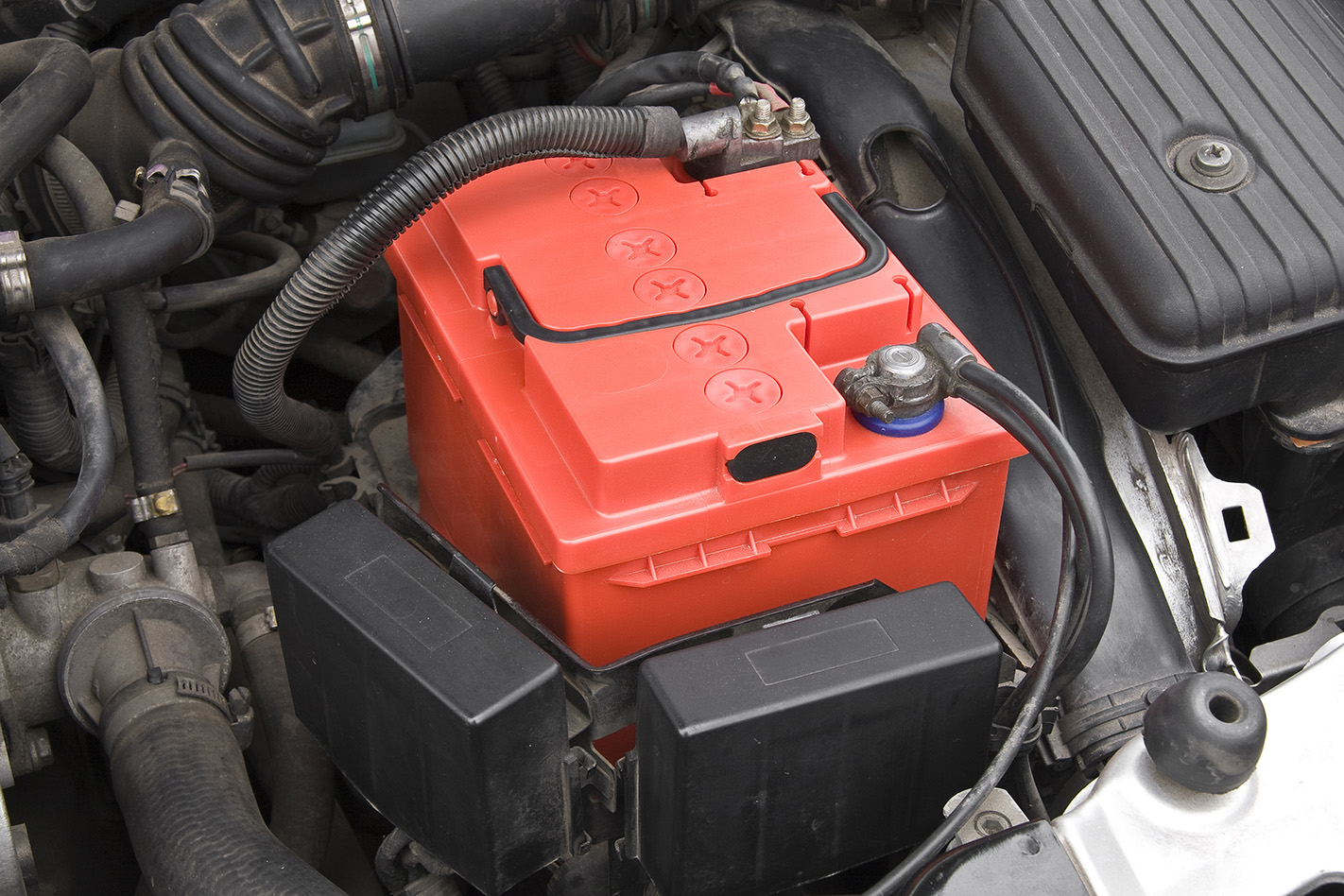
You can check these levels by unscrewing the caps on top of the battery (which you can see above marked with a cross) and making sure the water level inside is just touching the ends of the caps. If you need to top it up, use only demineralised/distilled water, and remove the two power cables (start with the black one before the red one) before you do so, taking care not to overfill the battery and spill acidy water everywhere.
Same goes for connections that have crudded up with white corrosive powder – disconnect the cables and give them a good clean.
If you aren’t comfortable doing any of these tasks yourself, find an old-school service station – service being the operative word here – and ask for assistance. The big auto stores will often help their customers after purchase for things like this as well.
Never be afraid to ask for advice, and if in doubt, go to your mechanic. Spending a little time here and a bit of cash there could save you a fortune down the road.



